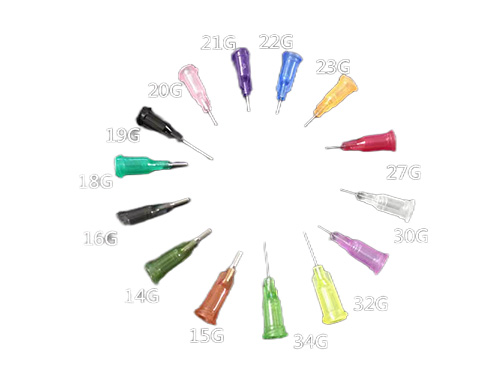Unveiling the Magic of High-Quality Seedling Trays in Promoting Root Development
2025-04-25 04:26:33
I. Introduction
Roots are the "lifeline" of seedling growth, and high-quality seedling trays serve as the key carriers for healthy root development. From spatial design to material properties, every detail holds secrets that facilitate root growth. This article delves into these mysteries to help you cultivate robust seedlings and gain an edge from the start.
II. Basic Understanding of Seedling Trays
2.1 Definition and Function
Seedling trays are standardized containers with divided compartments that enable centralized cultivation of seeds. Their core function is to provide a controlled growth environment for roots.
2.2 Evolution Trends
Modern seedling trays have evolved from simple shallow trays to specialized designs such as deep-hole trays and air-pruning trays. Materials have been upgraded to breathable and water-permeable plastics, precisely meeting the needs of root development.
III. Core Mechanisms of Seedling Trays in Promoting Root Development
3.1 Spatial Design Advantages
Vertical Guidance: Deep trays (depth ≥ 8 cm) force the main root to grow downward, preventing curling within the tray.
Root Isolation: Independent compartments block root entanglement between adjacent seedlings, promoting uniform germination of lateral roots.
3.2 Environmental Regulation Characteristics
Breathability and Water Permeability: Multi-hole designs at the bottom accelerate water exchange, preventing waterlogging and root rot.
Temperature and Humidity Buffering: Materials and structures reduce the impact of day-night temperature fluctuations, maintaining root activity.
3.3 Disease Prevention and Control Guarantees
Physical isolation of compartments prevents horizontal transmission of pathogens, reducing the risk of root rot and damping-off diseases affecting root health.
IV. Selection: Targeting Root-Friendly Designs
4.1 Structural Selection Points
Deep-Rooted Crops: Choose conical deep trays (with gradually narrowing bottom holes) to guide main roots to grow deeply.
Shallow-Rooted Crops: Use shallow trays with grid compartments to promote horizontal expansion of fibrous roots.
4.2 Material Adaptation Logic
Prioritize Breathability: PP plastic trays with micro-pores in the walls meet root respiration needs.
Avoid Chemical Residues: Food-grade materials prevent harmful substances from permeating and interfering with root development.
4.3 Detail Checklist
Drainage holes should be moderately dense (≥3 holes per compartment) with a 2-3mm diameter to prevent clogging.
Edges of compartments should be smooth and free of burrs to reduce mechanical damage to roots.
V. Usage: Maximizing Root Development Potential
5.1 Substrate Matching Principles
Loose formulations (peat moss + vermiculite + perlite) enhance breathability and prevent compaction that compresses roots.
For acidic plants (e.g., blueberries), adding sulfur powder adjusts pH to optimize root absorption environments.
5.2 Sowing and Management Techniques
Depth Control: Cover large seeds with soil equivalent to twice their diameter to ensure vertical downward growth of the embryonic root.
Temperature and Light Synergy: Maintain soil temperatures of 18-25°C during the seedling stage and use weak light to promote prior root development.
Moderate Drought: Water after the top layer of substrate slightly dries to simulate natural conditions and stimulate roots to seek water downward.
VI. Maintenance: Long-Term Guarantees for Root Health
6.1 Cleaning and Disinfection Cycle
Clean residual substrate immediately after use to prevent pathogens from multiplying on root debris.
Regularly disinfect with boiling water to prevent accumulation of soil-borne pests like root-knot nematodes.
6.2 Storage Precautions
Use soft paper to protect compartment structures when stacking trays to avoid deformation and damage to future root growth spaces.
VII. Troubleshooting Root Development Issues Related to Trays
7.1 Common Problem Sources
Root Curling: Shallow trays or small hole diameters restrict root extension.
Blackened and Rotten Roots: Clogged drainage holes cause hypoxia, or chemical leaching from materials poisons roots.
7.2 Coping Strategies
Replace with deep, breathable trays and apply biological agents to improve the rhizosphere environment in the substrate.
Check water quality and fertilizer concentrations to avoid salt accumulation burning root tips.
VIII. Conclusion: Good Trays Cultivate Good Roots, Foundation Determines Success
High-quality seedling trays create ideal environments for root development through scientific design. From selecting appropriate trays to meticulous usage, every step lays the foundation for robust seedlings. Master these secrets to make roots the "core engine" of vigorous seedling growth and embark on a new chapter of bountiful harvests!
This article focuses on root development mechanisms and practical operations, avoiding case data and emphasizing the integration of principles and methods. If you need to supplement details on root cultivation for specific crops or adjust content depth, feel free to inform me for optimization.

It adopts electrical integration and can be started by pressing the fully automatic button ...

The XP750 seeder has stable performance, excellent product quality, simple and convenient o...

It adopts electrical integration and can be started by pressing the fully automatic button ...

Needle list Seed nozzle model Different models Sowing types are different...



